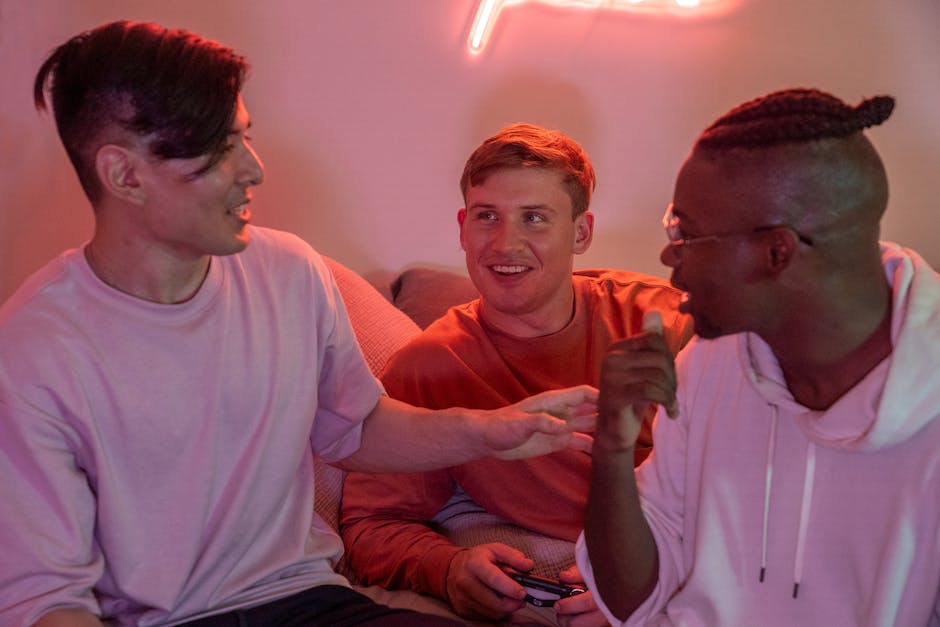Intro: Real Voices in a Virtual World
Game reviews are fine for specs, framerate, and surface-level praise or criticism. But they miss something critical—what it actually feels like to play. That’s where firsthand player stories come in. They dig beneath the mechanics and graphics to something more real: connection.
Whether it’s finding solace in a game after a hard day or forming a friendship halfway across the planet through co-op missions, these experiences reveal the impact games have on people’s lives. That’s not something a metascore can show. Stories stick. They remind us that gaming isn’t passive. It’s lived.
In 2024, with gaming more mainstream (and more monetized) than ever, sharing these personal narratives helps re-center the medium around people—not just platforms. Stats tell us what’s popular. Stories tell us why it matters.
This article isn’t just a highlight reel. It’s a collection of moments that show how games hit different when they hit close to home.
Story 1: “From Casual to Competitor”
It started with after-work chill sessions—booting up a game to unwind, no pressure, no ranks. For Marcus (tag: Firewired), gaming was background noise to real life. But within a year, he was scrimming five nights a week with a league-bound team and watching replays like film room tape. The leap from casual fun to competitive play wasn’t something he planned—it just happened, layered move by move: late-night Discord calls, strategy deep-dives, and constant trial-and-error on mechanics.
The biggest surprises? Strategy and time management mattered as much as reflexes. Learning enemy patterns and map flow helped more than raw aim. He started blocking out practice time like a part-time job. Team dynamics, too, became a sharp edge. A missed comm or ego-trip mid-match could cost the round. Building mutual respect with his squad—learning when to lead and when to fall back—was the real grind.
What made it sustainable was community. Friends who coached him through ranked slumps. Stream chat hyping every clutch moment. Tiny DMs with real advice, not just hype. That collective energy made the pursuit feel worth it. It was never about the rank—it was about being seen, pushed, and backed by people who cared that you showed up.
Marcus isn’t full eSports-bound. He still misses the days of just “jumping on a game.” But he says he’s never felt more connected to his play—and the people around it.
Story 2: “A Game That Got Me Through It”
Finding Light in Pixels
Some games do more than entertain—they become lifelines. For one player facing a personal mental health crisis, an immersive, narrative-rich RPG became more than a pastime. It provided a safe, stable world to navigate while the real one felt overwhelming.
“Logging in gave me a reason to get out of bed. The story kept me engaged, and the characters felt like friends when I needed them most.”
How Story-Driven Games Create Emotional Space
Unlike fast-paced shooters or competitive arenas, narrative games offer something quieter: space to feel, reflect, and connect.
Key ways story-driven games help support emotional wellness:
- Pacing that respects the player’s energy – allowing players to navigate the world at their own speed
- Relatable characters and dialogue – building empathy and connection
- Emotional arcs – mirroring real-life experiences and offering resolution through storytelling
These elements help create a calming form of immersion—one where the player doesn’t have to compete, but can simply ‘be.’
Mechanics That Quietly Support Mental Health
It’s not just the stories—some subtle and deliberate game design choices also make a difference:
- Save-anywhere systems, reducing anxiety around progress
- Soothing soundtracks and ambient design that lower stress levels
- Dialogue options with nonjudgmental tones, creating emotional safety
- Mindful challenges, such as puzzles or routines that support cognitive engagement without pressure
These thoughtful touches often go unnoticed in reviews but have a profound effect on players going through tough times.
“This game held my attention when nothing else could. It gave me a sense of accomplishment on days I didn’t even want to talk to anyone.”
Story 3: “My Family, the Guild”
It started with one account. Then a second. Now the entire Jackson family logs into the same MMORPG every Friday night like clockwork. What began as a way to keep in touch during a busy school year somehow turned into something rare: a full-blown family hobby that includes parents, two teens, and even a skeptical grandmother who now mains a healer with surprising proficiency.
Friday dungeon nights are sacred. Popcorn, headsets, maybe a shared pizza deal going in the background. The boss fights? Just part of the night. It’s the real-time decisions, cheering after a tough win, or laughing through a wiped run that have turned digital raids into real-life bonding. Unlike board games where someone always zones out or bails halfway through, here everyone’s in, working different roles, learning to listen, adjust, and support.
Cross-generational gaming used to mean a parent playing Candy Crush while the kids built in Minecraft. Now it’s synchronized spreadsheets of armor stats, planning three-person ambushes, and figuring out how to explain tanking mechanics to a fifty-year-old who swears she was just going to “click around and explore.”
This shift isn’t just heartwarming—it tweaks how we define teamwork. It’s not about reflexes or twitch skills. It’s about patience, communication, and picking up someone else’s slack when the going gets tough. Turns out, the family that grinds together, learns to problem-solve together.
Story 4: “Accessibility Isn’t Optional”
I was born with limited mobility in my hands and wrists. For most of my life, that meant watching others game while I sat on the sidelines. That changed when I played “Celestial Anchor,” a sci-fi exploration game that did one simple but powerful thing: it gave me options.
I could remap every control. The devs didn’t just include presets—they let me start from scratch. They added built-in support for adaptive controllers, no extra software workarounds needed. Even the UI had scalable fonts, high-contrast visuals, and a menu system that didn’t punish me for taking things slow. For once, the game waited for me.
Playing felt easy for the first time—easy in the way it should’ve always been. I wasn’t focused on what movements I could or couldn’t do. I was too busy charting asteroid belts and building out my fleet. That’s what inclusive design does: it gets out of the way so you can just play.
But here’s the thing—it’s still rare. Most big-budget titles overlook these basics. Accessibility settings are buried in menus or missing entirely. Controller support is inconsistent. Input options aren’t tested with real disabled gamers. The industry has started to talk a good game, but it’s time to deliver.
Designing for everyone isn’t a bonus feature—it’s the baseline. Inclusion isn’t about charity or compliance. It’s about acknowledging that players like me exist. When one game gets it right, it sets the standard. The rest need to catch up.
What Players Are Saying About 2024’s Big Titles
Strip away the marketing gloss, and what players are really talking about in 2024 comes down to a few recurring things: meaningful choices, replay value, and genuine emotional hooks. Across the forums, comment sections, and long-form player reviews, there’s a sharp eye for games that respect a player’s time while still offering depth. Shallow open worlds with padded side quests? Players are tuning out. But a tight, well-told story or a system that rewards experimentation? That’s where engagement sticks.
Long-time gamers in particular aren’t buying into flash over function. A polished UI and 4K textures mean little if the mechanics feel recycled or the story collapses after two hours. The games making waves are those that offer layers—systems you can master over time, narratives that adapt based on player input, and worlds that feel lived-in rather than tech demos.
The bar is high because the audience is smarter now. Many players have grown up alongside the industry. They’ve seen the trends come and go, and they can spot the difference between innovation and a reskin from a mile away.
For a closer look at what’s clicking—and what’s not—check out the full breakdown here: In-Depth Player Reviews of the Year’s Biggest Games.
The Power of the Community Voice
Why Developers Are Listening More Closely
Game studios are increasingly turning to the people who play their games—not just professional reviewers or esports champions, but everyday players with lived experience. From feedback forums to social media threads, community input now plays a vital role in shaping how games evolve.
- Bug reports and usability feedback make it into day-one patches
- Developers host AMAs, surveys, and livestreams to gather opinions
- Indie studios, in particular, are building entire roadmaps around player input
What used to be considered optional is now integral to success.
When Stories Drive Game Evolution
Real player stories are changing more than discourse—they’re changing design. Whether it’s a heartfelt blog post about accessibility or a viral thread about a buggy plotline, shared narratives are influencing the direction of updates and even future sequels.
- Personal experiences spotlight design gaps developers didn’t see
- Emotional connections reveal what keeps players loyal to a franchise
- Community-led movements have shaped DLC content and quality-of-life improvements
Developers are no longer building in a vacuum—they’re co-creating with the very people who play and care.
Every Player Has a Story
From solo adventurers to co-op strategists, every player brings unique perspectives. These voices reflect what matters most in gaming: connection, challenge, accessibility, and emotion. As storytelling in gaming evolves, so too does the player’s role in shaping that story.
The final takeaway: Your experience matters. Whether through forums, video essays, or guild chats—your voice can help make games better for everyone.
So we ask: What’s your story?


 Founder & Editor-in-Chief
Founder & Editor-in-Chief
